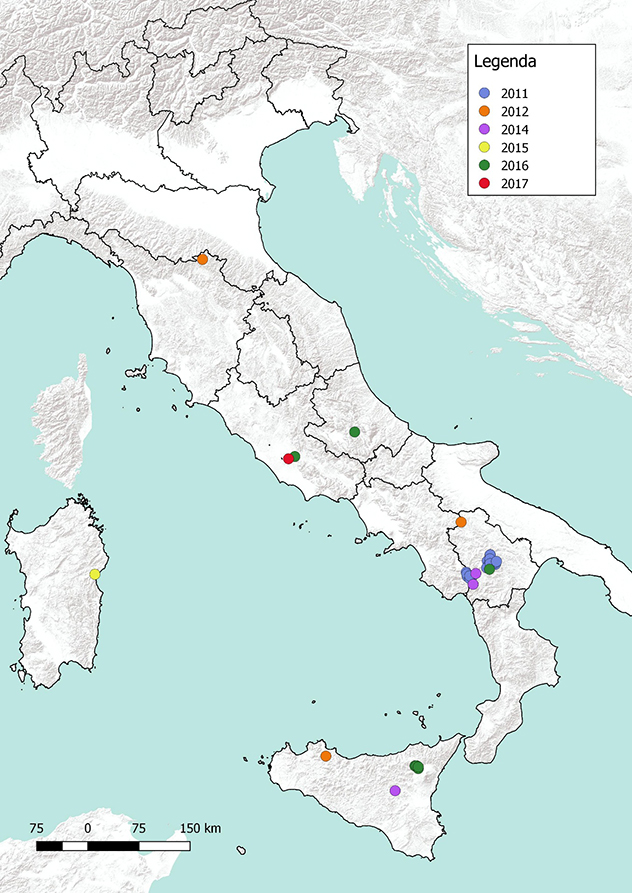Anthrax outbreak in Italy - Lazio RegionOn 31 August 2017Dr. Romano Marabelli, Chief Veterinary Officer, Secretary General, Ministry of Health, Rome - Italy, informed the OIE on an outbreak of anthrax in Rocca di Papa, in the Province of Roma, Lazio region.
The National Reference Centre for Anthrax - Competing endogenous RNAs - (Ce.R.N.A.) confirmed its positivity in 9 cattle by bacteriological examination and PCR.
The source of the outbreak or origin of infection is unknown or inconclusive.
Anthrax, also known as Carbonchio emantico in Italy, is an infectious septicemic disease, which affects cattle, sheep, goats, pigs, horse and human being. It is supported by Clostridium botulinum, named Bacillus Anthracis. The disease is included in the OIE list among the 118 diseases that are subject to notification.
Access to the area where the breeding was, has been checked. The measures implemented were the disinfection of the contaminated premises, the destruction, under official control, of the carcasses and their by-products; the rest of the livestock was confined.
Despite the precautions taken, an article published on 11 September 2017 in a local newspaper (ref: 1) reported two cases of contagion in humans: a veterinarian who had carried out autopsies on the animals dead by the infection and the keeper of the livestock (ref: 2; 3).
Unlike other areas where the disease has been almost completely eliminated among animals, in Italy, up to recent times there have been cases of anthrax in animals (figure 1), and occasionally some cases have also been reported in humans. In animals, the disease is characterized by acute septicemia with sudden onset and rapid fatality. Sometimes it can start with a chronic form with pustular lesions and fever.
The emergence of the B. anthracis spores in the soil, resulting in the contagion of the grazing animals, is associated to soil and climatic conditions (such as the increase in soil moisture after raining) that make a microenvironment favoring spore germination and multiplication of the bacterium.
There are three clinical forms of disease in man: skin, respiratory and gastrointestinal. The incubation time varies from a few hours to 7 days.In the first form, the infection occurs by contact with sick animals, their skins and their end-products, soil and fertilizers from contaminated sites.In the respiratory form, infection occur by inhaling spores during the processing of contaminated wool, leather or contaminated whole meal bones. Finally, the gastrointestinal form is very rare and difficult to diagnose unless it happens in epidemic food poisoning.
Bibliography

Figure 1. Anthrax outbreaks in Italy in mixed herds from 2010 to 2017
© IZSAM September 2017
|
|
Istituto Zooprofilattico Sperimentale
dell'Abruzzo e del Molise "G. Caporale"
Campo Boario | 64100 TERAMO | ITALIA
Telefono 0039.0861.3321 | Fax 0039.0861.332251
e-mail: archivioeprotocollo@izs.it
Posta elettronica certificata: protocollo@pec.izs.it
Partita IVA: 00060330677
Codice Fiscale: 80006470670


